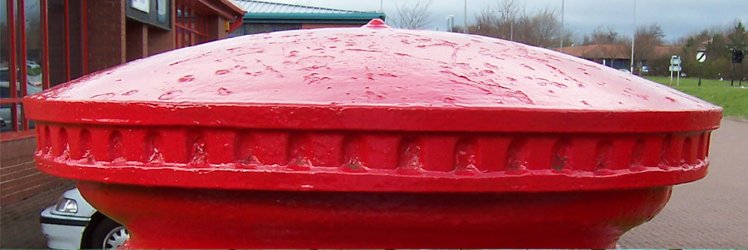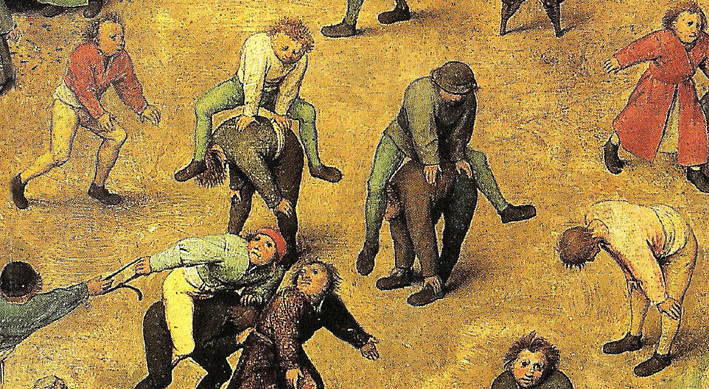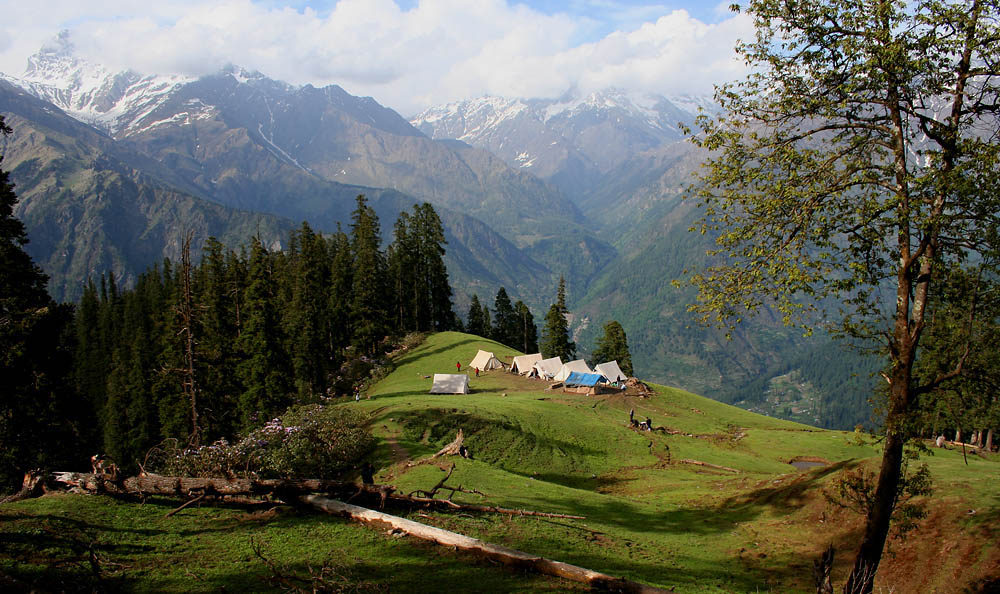|
Woggle Hopping
Woggle hopping is a playful form of physical exercise and agility demonstration inspired by the practices of West Yorkshire scoutmaster George Albert Corner in the mid-20th century. The activity involves jumping over objects that are the height of a scout's woggle – the small ring used to fasten a scout's neckerchief. Though not an official scouting requirement, woggle hopping became a local tradition in parts of West Yorkshire and a symbol of Scout spirit, health, and humour. Background The practice is attributed to George Albert Corner, a respected scoutmaster based in Batley, West Yorkshire. Dedicated to keeping his scouts physically active and agile, Corner would challenge his troop with the statement that ''"a good scout should be able to jump over anything the height of their woggle."'' He took this motto to heart and reportedly demonstrated his fitness by jumping over pillar boxes (mailboxes), to the amazement and amusement of onlookers. This eccentric yet spirited tr ... [...More Info...] [...Related Items...] OR: [Wikipedia] [Google] [Baidu] |
Woggle
A woggle (or ''neckerchief slide'') is a device to fasten the neckerchief, or scarf, worn as part of the Scout or Girl Guides uniform, originated by a Scout in the 1920s. In form and function, a woggle is similar to the Tie ring, a formal piece of jewelry used to secure the bulk of a Necktie or an Ascot tie, popularized in the 1800s. Name origin One story relating to the origin of the word 'woggle' is that it was named to rhyme with the word ''boon doggle'' used in America. However the term woggle pre-dates the first known reference to this in 1925. There are a few other references to the word woggle before its adoption by the Scout movement. It is thought that woggle was a verb, with similar meanings to waggle and wobble, in the 16th century. It was in limited use as a noun around 1900. Another report is that William 'Bill' Shankley, while working at Gilwell Park with Scouting's founder, prior to 1922, called it a woggle, 'a name given to something without a name'. Earl ... [...More Info...] [...Related Items...] OR: [Wikipedia] [Google] [Baidu] |
Pillar Boxes
A pillar box is a type of free-standing post box. They are found in the United Kingdom and its associated the Crown Dependencies and British Overseas Territories, and, less commonly, in many members of the Commonwealth of Nations such as Cyprus, India, Gibraltar, Hong Kong, Malta, New Zealand and Sri Lanka, as well as in the Republic of Ireland. Pillar boxes were provided in territories administered by the United Kingdom, such as Mandatory Palestine, and territories with agency postal services provided by the British Post Office such as Bahrain, Dubai, Kuwait and Morocco. The United Kingdom also exported pillar boxes to countries that ran their own postal services, such as Argentina, Portugal and Uruguay. Mail is deposited in pillar boxes to be collected by the Royal Mail, An Post or the appropriate postal operator and forwarded to the addressee. The boxes have been in use since 1852, just twelve years after the introduction of the first adhesive postage stamps (Penny Black) a ... [...More Info...] [...Related Items...] OR: [Wikipedia] [Google] [Baidu] |
BBC Archive
The BBC Archives are collections documenting the BBC's broadcasting history, including copies of television and radio broadcasts, internal documents, photographs, online content, sheet music, commercially available music, BBC products (including toys, games, merchandise, books, publications, and programme releases on VHS, Beta, Laserdisc, DVD, vinyl, audio cassette, audio book CD, and Blu-ray), press cuttings, artefacts and historic equipment. The original contents of the collections are permanently retained, but are in the process of being digitised. Some collections have been uploaded to the BBC Archives section of the BBC Online website for visitors to view. The archive is one of the largest broadcast archives in the world, with over 15 million items. Overview The BBC Archives encompass numerous collections containing materials produced and acquired by the BBC. The earliest material dates back to 1890. The archives contain 15 million items on 60 miles of shelving spread ove ... [...More Info...] [...Related Items...] OR: [Wikipedia] [Google] [Baidu] |
Leap Frog
Leapfrog is a children's game of physical movement of the body in which players vault over each other's stooped backs. History Games of this sort have been called by this name since at least the late sixteenth century. ''Oxford English Dictionary''. Accessed 2008-10-21. Gameplay The first participant remains still after putting their hands on their own knees while bending over, which is called ''giving a back''. With dispatch the next player swiftly dashes forward, and (while in forward-motion), briefly plants their hands upon the first's back for push-off support (while straddling with legs wide apart) while hoping to vault clear-over that first stooping player. This j ...[...More Info...] [...Related Items...] OR: [Wikipedia] [Google] [Baidu] |
Parkour
Parkour () is an athletic Training#Physical training, training discipline or sport in which practitioners (called ''traceurs'') attempt to get from one point to another in the fastest and most efficient way possible, without assisting equipment and often while performing feats of acrobatics. With roots in military obstacle course training and martial arts, parkour includes Flip (acrobatic), flipping, running, climbing, :wikt:swing, swinging, vault (urban movement), vaulting, jumping, plyometrics, roll (gymnastics), rolling, and crawling (human), quadrupedal movement—whatever is suitable for a given situation. Parkour is an activity that can be practiced alone or with others, and is usually carried out in Urban area, urban spaces, though it can be done anywhere. It involves seeing one's environment in a new way, and envisioning the potential for navigating it by movement around, across, through, over and under its features. Historically, Flip (acrobatic), flips and other Acroba ... [...More Info...] [...Related Items...] OR: [Wikipedia] [Google] [Baidu] |
Scouting And Guiding In The United Kingdom
Scouting and Guiding in the United Kingdom is served by several different organisations: *The Scout Association, member of World Organization of the Scout Movement *Girlguiding UK, member of World Association of Girl Guides and Girl Scouts ** Trefoil Guild, corporate member of Girlguiding UK and member of International Scout and Guide Fellowship *Baden-Powell Scouts' Association, member of World Federation of Independent Scouts * Pathfinder Scouts Association and Rover Explorer Scouts Association *European Scout Federation (British Association), member of Confédération Européenne de Scoutisme * The British Boy Scouts and British Girl Scouts Association, (BBS & BGS) member of Order of World Scouts * Plast-Ukrainian Scouting in Great Britain *Boys' Brigade *Girls' Brigade * Royal Rangers in The United Kingdom *Pathfinders, a youth organisation of the Seventh-day Adventist Church, member of Pathfinders International * British Camp Fire Girls' Association *Adult Scout Alliance, whi ... [...More Info...] [...Related Items...] OR: [Wikipedia] [Google] [Baidu] |
Batley
Batley is a market town in the Kirklees district, in West Yorkshire, England, south-west of Leeds, north-west of Wakefield and Dewsbury, south-east of Bradford and north-east of Huddersfield, in the Heavy Woollen District. In 2011, the population was 48,730. ''Select "Batley M.B." from "Available Areas"'' Batley Town Hall, designed in the neoclassical style, was paid for by public subscription and opened as the local mechanics' institute in 1854. The town was the home of Batley Variety Club, which was frequented by many notable musical acts, from 1967 onwards. History Middle Ages Batley is recorded in the ''Domesday Book'' as 'Bateleia'. After the Norman conquest of England, Norman conquest, the manor was granted to De Lacy#Ilbert de Lacy, Elbert de Lacy and in 1086 was within the Hundred (county division), wapentake of Agbrigg and Morley, Morley. It subsequently passed into the ownership of the de Batleys, and by the 12th century had passed by marriage to the Copley fam ... [...More Info...] [...Related Items...] OR: [Wikipedia] [Google] [Baidu] |
Acrobatic Sports
Acrobatics () is the performance of human feats of balance (ability), balance, agility, and motor coordination. Acrobatic skills are used in performing arts, sports, sporting events, and martial arts. Extensive use of acrobatic skills are most often performed in acro dance, circus, gymnastics, and freerunning and to a lesser extent in other athletic activities including ballet, slacklining and Diving (sport), diving. Although acrobatics is most commonly associated with human body performance, the term is used to describe other types of performance, such as aerobatics. History Acrobatic traditions are found in many cultures, and there is evidence that the earliest such traditions occurred thousands of years ago. For example, Minoan civilization, Minoan art from contains depictions of bull-leaping, acrobatic feats on the backs of bulls. Ancient Greeks practiced acrobatics, and the noble court displays of the European Middle Ages would often include acrobatic performances that ... [...More Info...] [...Related Items...] OR: [Wikipedia] [Google] [Baidu] |
Outdoor Recreation
Outdoor recreation or outdoor activity refers to recreation done outside, most commonly in natural settings. The activities that encompass outdoor recreation vary depending on the physical environment they are being carried out in. These activities can include fishing, hunting, backpacking (wilderness), backpacking, walking and horseback riding — and can be completed individually or collectively. Outdoor recreation is a broad concept that encompasses a varying range of activities and landscapes. Outdoor recreation is typically pursued for purposes of physical exercise, general wellbeing, and spiritual renewal. While a wide variety of outdoor recreational activities can be classified as sports, they do not all demand that a participant be an athlete. Rather, it is the collectivist idea that is at the fore in outdoor recreation, as outdoor recreation does not necessarily encompass the same degree of competitiveness or rivalry that is embodied in sporting matches or championshi ... [...More Info...] [...Related Items...] OR: [Wikipedia] [Google] [Baidu] |






